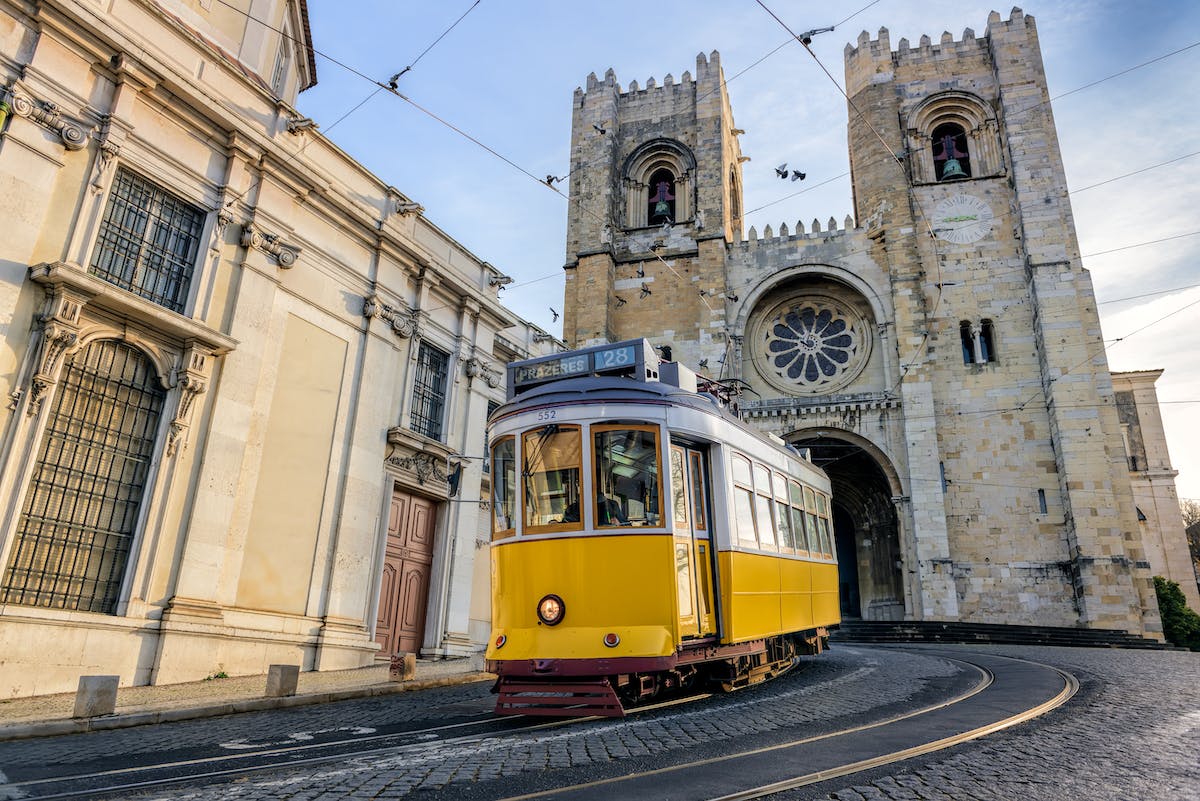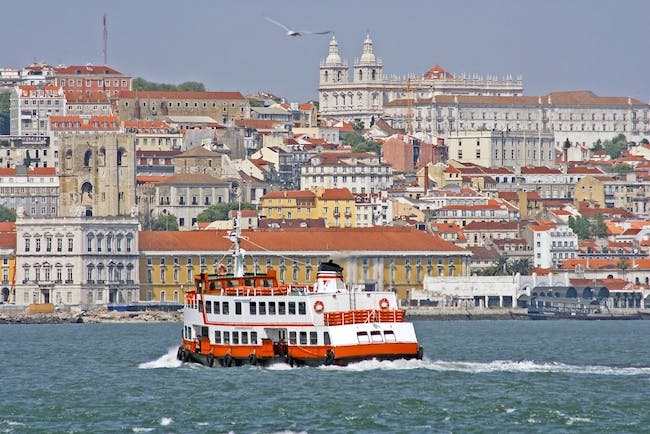Your guide to getting around an exciting Web Summit 2022

With more than 70,000 attendees expected for Web Summit from November 1-4, it may be tricky to work out the logistics around travelling to and staying in Lisbon. Here’s your guide to getting to and staying in the home of Web Summit.
There’s a reason Web Summit has been called the “the World Cup of tech conferences”. It attracts tech enthusiasts and business leaders from 160+ countries all over the globe. That can make working out how to get around Portugal’s capital before and during the event, and finding the right accommodation, challenging – without insider insight, that is.
Here’s our detailed advice on how to use Lisbon’s public transport system for getting to and from Web Summit, and guidance on where to stay in Lisbon for the week of the event.
Lisbon’s public transport system
Lisbon has a very well connected transportation network, including:
- Metro (light rail)
- Buses
- Ferries
- Trams
- Funicular lifts
- Suburban trains
- Taxis and private transport
The Viva Viagem card is the easiest way to use Lisbon public transport, connecting people with metro, buses, ferries, trams, funiculars and suburban trains. You can buy a Viva Viagem card (for €0.50) from the automatic ticket machine or ticket offices in most metro, ferry and train stations. You can also get them from PayShop selling points across the city.
You can purchase:
- A single ticket (€1.50) for a specific trip, valid for one hour on one continuous journey.
- One-day tickets (€6.45 – €10.70) cover unlimited travel on transport links within Lisbon and, at the higher price ranges, ferry and train connections to regional areas.
- The pay as you go option (€3 – €40) allows you to load your Viva Viagem card with an amount you think you’ll need and you can top up if you run out.
You can also purchase tickets with cash or debit/credit cards from most transport stations.
While Lisbon’s transport network is very safe, you should still be aware of pickpockets, particularly on routes with lots of tourist traffic.
Getting to and from Web Summit
Web Summit will be held in the Altice Arena and FIL at Rossio dos Olivais, 1990-231 Lisbon. While the start and finish times of the different activations vary, you should plan to be onsite from 9am – 5pm each day of the event. Here’s how you can get to the conference centre.
By metro
From Lisbon city centre, take the green line from Baixa-Chiado station to Alameda station. Then take the red line to Oriente (Estação Oriente), a five-minute walk from the Altice Arena.
Alternatively, you can take the blue line from Baixa-Chiado to São Sebastião. From there, you can take the red line to Oriente station.
You can access the full list of metro routes and timetables.
By bus
You can take the 728, 744 or 782 bus routes from around Lisbon city centre to Oriente (Estação Oriente), a five-minute walk from the event venue.
You can find more information on bus routes and travel times.
By ferry
Ferries run frequently across the Tagus river from Seixal, Barreiro and Montijo into stations near the Praça do Commércio. From there, passengers can take the green line from Baixa-Chiado station to Alameda station, then the red line to Oriente (Estação Oriente). Alternatively, they can take the 728 bus route directly to the Parque Das Nações area.
A ferry also runs from Trafaria into Belém. Travellers can then use the E15 tram service to access downtown Lisbon and the metro links (such as Baixa-Chiado) or they can take the 728 bus route directly to the Parque Das Nações area.
You can discover the timetables and prices for the local ferries further.
 Ferry traveling to Lisbon. Image: Steve Photography/Shutterstock
Ferry traveling to Lisbon. Image: Steve Photography/Shutterstock
By suburban train
Oriente station is directly connected to the regional trains running out to Sintra and Azambuja. Train lines from areas such as Setúbal and Cascais run through Lisbon city centre, from which travellers can connect to metro or bus routes taking them through to the Altice Arena and FIL.
You can learn more about the routes, prices and time of regional trains.
By taxi
You can catch a taxi from most areas in Lisbon, or use ride share apps such as Uber or Lyft. Dedicated drop-off and collection points at the Altice Arena will operate on all event days.
By tram
Lisbon’s historic tram networks don’t run to where the Altice Arena is. Save your tram rides for trips around the historic city centre before Night Summit!
Where to stay during Web Summit
We have partnered with b-network where you can book exclusive hotel offers for your stay. The city offers a huge range of accommodation in different locations and to suit different tastes and price points. Here are a few suburbs that offer excellent accommodation options:
Parque das Nações
Parque das Nações, and surrounds including Cabo Ruivo and Moscavide, are within easy walking distance of the Altice Arena and FIL. These areas offer plenty of high-rise accommodation options with recognisable chain names including ibis and Sana Hotels.
The area is also within easy access of Vasco da Gama Shopping Centre, Lisbon Aquarium and the Torre Vasco da Gama, as well as myriad restaurant and bar options.
Baixa-Chiado
Baixa-Chiado is Lisbon’s historic heart and is well-connected to the rest of the city. Hotels range from upmarket to moderate, and there are plenty of AirBnB and hostel accommodation options too.
The area is centred around the two squares, Praça de Commércio and Praça Dom Pedro IV (known as Rossio), with busy pedestrian streets connecting eateries, upscale shops, and sights including the The National Museum of Contemporary Art and the Santa Justa Lift.
Belém
While a little further out of Lisbon city centre, Belém is a laid-back area with a large number of hotel options offering travellers expansive views over the Tagus River.
The area is well known for its seafood restaurants and historic landmarks recalling Portugal’s seafaring past, such as the sixteenth-century Tower of Belém. There’s also the vast Jerónimos Monastery – and let’s not forget this is the home of the popular Pastéis de Belém custard tart!
 Tower of Belém. Image: milosk50/Shutterstock
Tower of Belém. Image: milosk50/Shutterstock
Bairro Alto
Perhaps the most iconic suburb is all of Lisbon, much of the accommodation in Bairro Alto comes in the form of smaller boutique hotels and AirBnBs within centuries-old Portuguese townhouses. You can use the funicular lifts and trams to navigate the hills up and down Bairro Alto.
The quiet streets in Bairro Alto are decorated with vivid street art, giving the area a dynamic atmosphere only heightened after dark with crowds of visitors and locals filling hip bars and traditional restaurants awash with the sounds of Fado.
Alfama
Much like Bairro Alto, many of Alfama’s hotels and guesthouses are smaller and independently owned, in keeping with the suburb’s distinctive architecture and traditional atmosphere.
The home of Castelo de São Jorge — an eleventh-century hilltop Moorish castle with palace ruins — and Lisbon Cathedral, Alfama is one of Lisbon’s oldest and most beloved areas. Packed with shops selling traditional crafts, the streets are connected by the city’s iconic tram system.
Excited for Web Summit? Ensure you download the event mobile app and created your event attendee profile to make the most of your experience in Lisbon this November!
Main image of a tram, part of Lisbon public transportation, traveling through the city: Kraft_Stoff/Shutterstock


